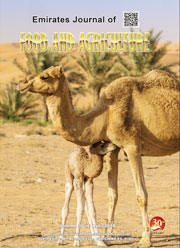Influence of different nitrate and iron availabilities on phosphoenolpiruvate carboxilase and malate dehydrogenase in roots of maize (Zea mays L.) plants
DOI:
https://doi.org/10.9755/ejfa.v22i3.4887Keywords:
Zea mays, iron availability, phosphoenolpiruvate carboxilase, malate dehydrogenaseAbstract
The effect of the different nitrate (NO3) availability on some enzymatic activities has been evaluated in iron (Fe) deficient and iron sufficient maize plants (Zea mays L.) in order to evaluate the induction of Fe sensitiveness to enzymatic activities. The apoplast reactions may be altered due to the different nitrate availability. Two experimental tests were done on maize plants grown in nutrient solution with different NO3 availability and with Fe-sufficiency and Fedeficiency. Phosphoenolpiruvate carboxilase (PEPcase) and malate dehydrogenase activities, for the reaction determined in citosol, by NO3 uptake, showed different responses according to Fe availability. The different nitrate availability caused a difference in the acid content. These results justifies the higher energy demand to activate membrane carriers under stress conditions for the reduced nitrate availability.










 .
. 